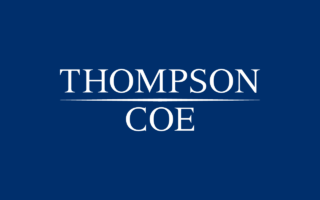Four Years Later: The Impact of Texas Insurance Code Section 542A.006 on Insurance Litigation
By • May 4, 2022 • In Journal of Texas Insurance Law
Chapter 542A of the Texas Insurance Code went into effect over four years ago on September 1, 2017. One of the stated purposes of Chapter 542A was to “mitigate the growing trend of abusive severe weather event lawsuits” that were brought by “[o]pportunistic lawyers [who] have been using extreme weather events as a pretext for exaggerating damages, suing innocent parties, and failing to give notice to insurers before filing lawsuits.”1 Its supporters observed a 1,400 percent increase in weather-related lawsuits against property insurers prior to its adoption, which were “motivated by profit, not actual damages to real property.”2 In adopting the bill, the Texas Legislature intended to curb such actions.3 In contrast, policyholder attorneys responded with warnings about the impact of Chapter 542A, including its regression of policyholders’ rights.
Since Chapter 542A went into effect, both state and federal courts in Texas have continued to wrestle with the nuances of its application. One of the most important (and to some, infamous) provisions of Chapter 542A is found in section 542A.006. Section 542A.006 allows for the election of legal responsibility by insurers for their agents. Once an election is made, no causes of action exist against that agent related to the claim and the agent must be dismissed from the lawsuit. Since its inception, section 542A.006 has birthed a vigorous split among the federal district courts in Texas regarding the impact of the timing of an election of legal responsibility on diversity jurisdiction in federal courts—which, of course, can have a profound impact on the entire lawsuit and even its ultimate outcome. On one hand, some courts have held that an election under section 542A.006 after suit is filed is tantamount to a dismissal for improper joinder. Accordingly, the case can be removed to federal court because diversity existed at the time of removal. On the other hand, other courts have held that removal to federal court is precluded under the voluntarily-involuntary rule if the instate defendant was properly joined when the lawsuit was first filed, even if a later election of legal responsibility was made under section 542A.006 prior to an attempted removal to federal court. This article considers both positions and the impact of section 542A.006 over the past four years. To that end, the article assesses one of the most recent decisions in Valverde v. Maxum Casualty Insurance Co. to illustrate the split among federal district courts in Texas regarding this issue, as well as the legal basis of the Court’s dispute.
I. Election of Legal Responsibility
Prior to adopting Chapter 542A, a common litigation tactic regularly employed in first-party residential and commercial property cases was to name a local independent adjuster in the lawsuit.4 Independent adjusters are independent agents who work for multiple insurance companies and investigate claimed losses.5 Beyond mere jurisdictional implications, which are considered later in this article, such an approach has the real-world effect of suing a person in their individual capacity.6
In adopting Chapter 542A, the Texas legislature curbed this practice by allowing carriers to “elect to accept whatever liability an agent might have to the claimant for the agents acts or omissions related to the claim by providing written notice to the claimant.”7 Importantly, the Texas Legislature broadly defined “agent” as “an employee, agent, representative, or adjuster who performs any act on behalf of an insurer.”8 Additionally, the text of section 542A.006 imposes no limitation on when an insurer must make the election, and the election may be made either pre-suit or after suit has already been filed.9 The statute provides that if an insurer makes this election before suit is filed, “no cause of action exists against the agent related to the claimant’s claim.”10 If the claimant then proceeds to file suit, the statute mandates dismissal of the action with prejudice.11 When an election occurs after suit has been filed, the Texas Insurance Code still dictates “the court shall dismiss that action with prejudice.”12 Simply put, section 542A.006 arguably mandates the same result whether the election occurs pre-suit or after suit has been filed—i.e., dismissal of the causes of action against the agent. How this affects jurisdiction and removal to federal court will be considered
in subsequent sections.
II. Removal to Federal Court
Jurisdiction is a necessary element for courts to decide cases. One way that federal courts have jurisdiction is through diversity jurisdiction, which is authority to decide cases when a suit involves a controversy between diverse parties (based on citizenship) and the amount in controversy exceeds $75,000, exclusive of interest and costs.13 When these criteria are met, an out-of-state defendant (such as an out-of-state property insurer) may remove the case to federal court. There are, however, two mutually exclusive 30-day periods when removal to federal court can occur. Under the first period, a case may be removed to federal court within 30 days of when a defendant receives the initial pleading, if it is removable on its face.14 The most common example of this would be a scenario when a defendant receives service of process at the start of the lawsuit, assuming the parties are diverse and the amount in controversy exceeds $75,000. Under these facts, the lawsuit is removable at the time the defendant received the initial pleading and it must be removed within 30 days of receipt.
The second scenario can be more complicated. If a case is not removable on the face of the pleading, it may nevertheless be removed to federal court within 30 days after the defendant receives “a copy of an amended pleading, motion, order or other paper from which it may first be ascertained that the case is one which is or has become removable.”15 Stated another way, a defendant may remove a case to federal court “as soon as the action assumes the shape of a removable case in the court in which it was brought.”16 Additionally, federal procedure mandates that removal under this second period cannot occur more than one year after commencement of the action.17 A common example of this scenario would be a situation where a Texas plaintiff sues both a Texas and out-of-state defendant. Under these facts, the lawsuit would not be removable when it was originally filed—assuming the plaintiff has stated a claim upon which relief can be granted against the Texas defendant.18 If the plaintiff later files an amended petition in state court that drops the Texas defendant, then the out-of-state defendant may remove the case to federal court so long as the amount in controversy exceeds $75,000 and the case has been pending for less than a year.
Courts have restricted this second period under a judge-made rule to require that the change be predicated on a voluntary act of the plaintiff, which is known as the “voluntary-involuntary rule.” Under the voluntary-involuntary rule, “an action nonremovable when commenced may become removable thereafter only by the voluntary act of the plaintiff.”19 The prototypical example of a voluntary act would be a plaintiff amending his or her petition to drop a Texas defendant from the lawsuit or otherwise non-suit the Texas defendant, as used in the second example above.
The voluntary-involuntary rule was created in 1898 by the U.S. Supreme Court in Powers v. Chesapeake & Ohio Railway Co.,20 and has been reaffirmed since.21 As explained by the Fifth Circuit in Weems v. Louis Dreyfus Corp., which considered Powers, the purpose of the voluntary-involuntary rule is as follows:
Until 1949 no statutory provision dealt with the question of removal after commencement of a suit. The case law developed the rule, relatively simple to apply, that if the resident defendant was dismissed from the case by the voluntary act of the plaintiff, the case became removable, but if the dismissal was the result of either the defendant’s or the court’s acting against the wish of the plaintiff, the case could not be removed. Although the rule has often been criticized for failing to explicate an underlying rationale, it nevertheless had merit in that it prevents removal of those cases in which the issue of the resident defendant’s dismissal has not been finally determined in the state courts. This avoids the duplication and expense which would result if a resident defendant was dismissed on an appealable ground, the nonresident was permitted to remove, and the plaintiff then obtained a reversal of the dismissal in the state appellate courts. On the other hand, that danger does not arise where a plaintiff voluntarily drops a resident defendant since appeal then is not available, and the elimination of the resident defendant from the case is final.22
Thus, finality and appealability is a recognized justification for the voluntary-involuntary rule.
A long-recognized exception to the voluntary-involuntary rule, however, is improper joinder.23 The improper joinder rule is predicated on the language of 28 U.S.C. § 1441(b) (2),24 which states that a case may not be removed to federal court on the basis of diversity jurisdiction “if any of the parties in interest properly joined and served as defendants is a citizen of the State in which such action is brought.”25 A party may establish improper joinder by showing (1) actual fraud in the pleading of jurisdictional facts or (2) a plaintiff ’s inability to establish a state-law claim against the non-diverse defendant.26 Under the second prong, courts conduct a Rule 12(b)(6)-type analysis to determine if the plaintiff states a claim upon which relief can be granted.27 Under such an analysis, courts “look[] initially at the allegations of the complaint to determine whether the complaint states a claim under state law against the in-state defendant. Ordinarily, if a plaintiff can survive a Rule 12(b)(6) challenge, there is no improper joinder.”28 When improper joinder has been found, however, diversity jurisdiction is justified.
Divergent Approaches: Timing of an Election Under Section 542A.006
Much of the initial discussion (and argument) regarding elections of legal responsibility under section 542A.006 focused on the timing of an election. Section 542A.006 provides that when an election of legal responsibility is made pre-suit, “no cause of action exists against the agent related to the claimant’s claim.”29 When a pre-suit election is made, the agent should not be named as a defendant in a related lawsuit and the initial pleading against an out-of-state carrier should, therefore, be removable on its face. Under those facts, the carrier should remove the case within the first period—i.e., within 30 days of receipt of the initial pleading.30 Even if the in-state agent is nevertheless named as a defendant by a policyholder after notice under section 542A.006 is made pre-suit, the case is still removable on its face because no causes of action could be sustained against that agent. In such cases, the carrier could assert improper joinder in light of its pre-suit election when removing the case. Removal after a pre-suit election is general uncontroversial.31 In sum, when a pre-suit election occurs, removal must occur within 30 days of when the carrier receives the initial pleading.32
Issues arise, however, when a suit is filed before an election of legal responsibility is made.33 The viability of removal after a post-filing election of legal responsibility has been consistently considered by federal district courts throughout Texas since Chapter 542A first went into effect.34 The courts have generally adopted two divergent approaches regarding the propriety of removal after a post-filing election of legal responsibility. Under the first approach, the election removes all viable causes of action against the in-state agent. Consequently, “dismissal under § 542A.006 is appropriately viewed as a dismissal for improper joinder and thus [a] state court’s dismissal order is tantamount to a dismissal for improper joinder.”35 The widest reading of this approach could permit removal within the second removal period anytime within one year of the policyholder commencing the action, assuming removal occurred within 30 days of the state court dismissing the in-state defendant and the amount in controversy exceeds $75,000.36 A narrower interpretation of this approach would still permit the election to be filed within the first removal period, thus permitting a defendant to argue improper joinder on the initial pleading’s face based on the post-filing election of legal responsibility, assuming it occurred within the initial 30-day period and prior to removal.
The second approach adopted by other federal district courts, focuses on the propriety of the joinder when suit was filed in the state court—not at the time of removal to federal court. Under this second approach, if the election did not occur pre-suit, then (according to its proponents) joinder was proper at the time of filing, and the initial pleading was neither removable on its face nor was dismissal voluntary for purposes of the voluntary-involuntary rule.37 In short, the second approach requires the election to occur pre-suit in order for an out-of-state carrier to ever be able to remove a case to federal court. The crux of the second approach is an a restrictive reading of the improper joinder rule.
III. Reconciling Post-Suit Elections, the Voluntary-Involuntary Rule, and Improper Joinder: Valverde v. Maxum Casualty Insurance Company
As noted in the preceding section, there is little (if any) dispute about removal to federal court following a presuit election of legal responsibility—at least as long as they occur within 30 days of receiving the initial pleading and the amount in controversy exceeds $75,000. Rather, most of the litigation has focused on whether cases with post-suit elections of legal responsibility under section 542A.006 are removable to federal court. The central dispute, as well as the arguments for and against removal to federal court in such cases, was recently considered in detail in Valverde v. Maxum Casualty Insurance Company, which arose in the U.S. District Court for the Southern District of Texas.38 In Valverde, a property owner brought an action against her insurer, alleging that the insurer wrongfully refused to pay insurance benefits owed, as well as a non-diverse insurance adjuster for his alleged failure to perform an inadequate investigation of wind and hailstorm damage to her property.39 She also alleged that the adjuster performed an outcome-oriented investigation.40 The lawsuit was originally filed in state court on May 18, 2021.41 On June 14, 2021, the insurer filed a notice of election of legal responsibility, pursuant to section 542A.006, in state court and then removed the case to federal court on diversity grounds.42
Following the election of legal responsibility and removal to federal court, the parties filed a Joint Discovery/Case Management Plan on July 12, 2021.43 In reviewing the Plan, the court observed that the independent adjuster and plaintiff were both Texas citizens and, therefore, the court might lack diversity jurisdiction.44 Accordingly, the court ordered all parties to “clarify their positions visà-vis this Court’s jurisdiction.”45 On July 28, 2021, the insurer responded to the court’s order by filing a Motion to Dismiss pursuant to Rule 12(b)(6) of the Federal Rules of Civil Procedure.46 Interestingly, the plaintiff failed to timely respond, so the Motion to Dismiss was considered as unopposed.47 Nevertheless, U.S. District Court Judge Micaela Alvarez issued an extensive opinion on August 31, 2021 that considered the basis of the court’s diversity jurisdiction, as well as the main contrary arguments considered by other federal courts in similar circumstances.
As an initial matter, the court acknowledged that its prior decision in Ramirez v. Allstate Vehicle & Property Insurance Co.48 identified “a bright-line rule: a non-diverse defendant is improperly joined when ‘the [diverse] defendant has demonstrated that there is no possibility of recovery by the plaintiff against the in-state defendant.’”49 Based on the insurer’s election of legal responsibility in the state court and the “bright-line rule,” the court determined that the plaintiff could not recover against the adjuster and dismissed him from the lawsuit.50
The court then turned to two recent opinions issued by U.S. District Judge Mark T. Pittman in Morgan v. Chubb Lloyds Insurance Company of Texas51 and Kessler v. Allstate Fire and Casualty Insurance Co.,52 which were issued within minutes of each other and “substantially identical in their rejection of [Judge Alverez’s] opinion [in Ramirez, which held] that jurisdictional facts are determined at the time of removal, so the improper joinder rule requires dismissal of the nondiverse insurance adjuster after a § 542A.006 election, and their further rejection of this Court’s judgment that the voluntary-involuntary doctrinal rule does not impair that result.”53 Stated another way, Morgan and Kessler rejected the “bright-line rule” articulated in Ramirez that found removal to federal court proper after a post-suit election of legal responsibility in state court.
The court began its reassessment of the issue by considering the rules and doctrines at issue in these matters. First, it observed that a defendant is entitled to remove a case to federal court within 30 days after receipt of “a copy of an amended pleading, motion, order or other paper from which it may first be ascertained that the case is one which is or has become removable.”54 Thus, a defendant may remove “as soon as the action assumes the shape of a removable case in the court in which it was brought.”55 In Valverde, the insurer filed its election of legal responsibility for the adjuster in state court and then removed the case to federal court within 30 days of its election.56 “In doing so, [the insurer] invoked the improper joinder rule,” which provides that a case may not be removed to federal court on the basis of diversity jurisdiction “if any of the parties in interest properly joined and served as defendants is a citizen of the State in which such action is brought.”57 However, a partying removing a case to federal court may demonstrate improper joinder (which satisfies federal jurisdiction) by showing the “inability of the plaintiff to establish a cause of action against the non-diverse party in state court.”58 As observed in Valverde, “[i]f the foregoing were the only relevant laws and doctrines, dismissal of [the adjuster] would be a foregone conclusion.”59 Yet, courts have also looked to the voluntary-involuntary rule in such situations—which was discussed above.
The voluntary-involuntary rule, according to the court, is an “additional stricture,” which provides that when a case is not removable on its face, only the voluntary dismissal or nonsuit by the plaintiff of the non-diverse defendant can make the case removable.60 The rule forms the “core” of the disagreement between Morgan (and the “substantially identical” opinion in Keller) with Ramirez.61 This also echoes the disagreement found in other decisions, as well as the split outlined in the preceding section.62 The Morgan decision rests on three predicate determinations to find that cases must be remanded to state court when a postsuit election was made prior to removal: (1) the improper joinder rule does not override and is not an exception to the voluntary-involuntary rule; (2) even if the improper joinder rule overrides the voluntary-involuntary rule, the insurance adjuster is not improperly joined ab initio so the improper joinder rule does not require finding federal jurisdiction; and (3) even if the plaintiff appears to have improperly joined an in-state defendant adjuster, lingering doubts must result in remand.63 The court in Valverde, however, considered and rejected each of these propositions for the reasons discussed below.
First, Morgan held that “the improper joinder rule and voluntary-involuntary rule are two judicial doctrines that protect different interests that ‘sit in tension: the voluntary-involuntary rule protects a plaintiff ’s right to choose its forum; the improper-joinder rule protects a defendant’s right to a federal forum.’”64 Moreover, “[e]ach rule must have some application, and neither can destroy the other.”65 The court in Valverde noted that Morgan relied on a 2008 student note in the Baylor Law Review when considering this point;66 however, based on U.S. Supreme Court authority, “the voluntary-involuntary rule has doctrinal vitality that the Fifth Circuit lacks the authority to degrade.”67 It then outlined the history of the voluntary-involuntary rule, observing its “doctrinal genesis” is found in the 1889 U.S. Supreme Court case of Powers,68 which held that a case was removable to federal court because the plaintiff had discontinued its action against all nondiverse citizens.69 The voluntary-involuntary rule “took solid form” approximately a decade later with the U.S. Supreme Court decision in Whitcomb v. Smithson70 in 1900.71 In Whitcomb, a state trial court, in a decision later affirmed by the state’s appellate courts, directed a verdict in favor of an in-state defendant in the pending litigation.72 The remaining defendants unsuccessfully attempted to remove the case to federal court.73 Ultimately, the U.S. Supreme Court affirmed the denial, observing that the directed verdict “was a ruling on the merits, and not a ruling on the question of jurisdiction.”74 According to the U.S. Supreme Court, “[the ruling] was adverse to plaintiff, and without his assent, and the trial court rightly held that it did not operate to make the cause then removable [to federal court].”75 This approach was further clarified by the U.S. Supreme Court in American Car & Foundry Co. v. Kettelhake, 76 where the court summarized the voluntary-involuntary rule in the following terms:
[W]e think it fairly appears from [Powers and its progeny] that where there is a joint cause of action against defendants resident of the same state with the plaintiff and a nonresident defendant, it must appear, to make the case a removable one as to a nonresident defendant because of dismissal as to resident defendants, that the discontinuance as to such defendants was voluntary on the part of the plaintiff, and that such action has taken the resident defendants out of the case, so as to leave a controversy wholly between the plaintiff and the nonresident defendant.77
Thus, consent of the plaintiff was central to the issue of removability under the voluntary-involuntary rule, and “only the plaintiff ’s voluntary act could create federal diversity jurisdiction.”78
The court in Valverde contrasted Powers and its progeny with a prior 1878 U.S. Supreme Court decision in Yulee v. Vose,79 which held that an out-of-state defendant was entitled to remove a case to federal court after a state court dismissed all of the plaintiff ’s claims against the in-state defendant.80 Notably, Yulee has not been overruled by the U.S. Supreme Court. As observed by the court in Valverde: “Yulee v. Vose therefore squarely conflicts with the later-developed voluntary-involuntary rule: in 1878, a case was removable after the state court dismissed all non-resident defendants against the plaintiff ’s will, but in 1915, it was not.”81 The court in Valverde also considered the 1949 amendments to the federal removal statute found in 28 U.S.C. § 1446(b) and observed that by 1992 ever federal court of appeals to address the issue determined that the voluntary-involuntary rule survived the enactment of Congress’s amendments.82 This included the Fifth Circuit with its 1967 decision in Weems, which “thoroughly rebuked” the position that the voluntary-involuntary rule was overruled by the amendments to the removal statute.83 In light of Weems, the Valverde court concluded that the voluntarily-involuntary rule persists.84
Based on the above, and in contrast with Morgan, the court in Valverde nevertheless concluded that the improper joinder rule and voluntary-involuntary rule are “consistent” based on looking at the policy cornerstone and scope of the rule.85 Notably, the court looked to the holding in Weems in reaching this conclusion, which, inter alia, held:
[The voluntary-involuntary has] merit in that it prevents removal of those cases in which the issue of the resident defendant’s dismissal has not been finally determined in the state courts. This avoids the duplication and expense which would result if a resident defendant was dismissed on an appealable ground, the nonresident was permitted to remove, and the plaintiff then obtained a reversal of the dismissal in the state appellate courts. On the other hand, that danger does not arise where a plaintiff voluntarily drops a resident defendant since appeal then is not available, and the elimination of the resident defendant from the case is final.86
The Valverde court found that this language “supports the idea that the voluntary-involuntary rule does not override the improper joinder rule in instances in which there is no possibility that a nondiverse defendant will be restored to the case.”87
Next, the Valverde court disagreed with the Morgan and Ramirez courts regarding the timing for an assessment of improper joinder. Specifically, the court noted “Morgan held that Ramirez’s focus on the plaintiff ’s claims at the time of removal was a misinterpretation of precedent, and that ‘no Fifth Circuit case holds that the improper-joinder rule requires courts to pretend that a defendant that was initially joined properly became improperly joined later.’”88 In support of this reasoning, the Valverde court cited to the Fifth Circuit’s opinions in Smallwood v. Illinois Central Railroad Co.89 and Flagg v. Stryker Corp.90 Notably, the court emphasized that the Fifth Circuit’s en banc decision in Flagg stated that “to determine whether a plaintiff has improperly joined a non-diverse defendant, the district court must examine the plaintiff ’s possibility of recovery against that defendant at the time of removal”91 and that “[j]urisdictional facts are determined at the time of removal.”92 The court in Valverde then explained that “[t]he Flagg court’s holding that improper joinder is tested at the time of removal, not when the plaintiff ’s claims are first asserted, is consistent with numerous preceding Fifth Circuit authorities, and the Supreme Court’s long-established holding.”93 Thus, the Valverde court concluded that federal courts should look to whether there was a viable claim at the time of removal—not when the lawsuit was filed—when applying the test for improper joinder.94
Finally, the Valverde court considered “Morgan[’s] hold[ing] that, because a Court must presume a suit lies outside its limited jurisdiction and resolve all doubts and ambiguities in favor of remand, remand is required in the face of confusing precedents governing the improper joinder and voluntary-involuntary rules.”95 Specifically, the Valverde court rejected the position that the controlling law was sufficiently ambiguous to mandate remand, as “the Court does not find that the Fifth Circuit has left the law in such disarray that the Court is entitled to breezily remand a case over which diversity jurisdiction evidently attaches.”96 Rather, as outlined above, binding authority is clear. Moreover, it has been well-established since at least the nineteenth century that “[courts] must take jurisdiction if it should.”97 The court declined to “simply say that there are doubts in the controlling law that require remand” and, consistent with direction from the U.S. Supreme Court, resolved issues to the best of its abilities in light of relevant authority and within the contours of state and federal jurisdiction.98
Ultimately, the Valverde court reaffirmed its decision in Ramirez and dismissed the adjuster in light of the insurer’s election of legal responsibility under section 542A.006.99 The court succinctly distilled these principles in the following manner: “[an insurer’s] election of liability for [an agent] under Texas Insurance Code § 542A.006 in state court prior to removal to federal court ‘effectively and irreversibly dismisses the agent from the case and results in no reasonable basis for the District Court to predict that the plaintiff may be able to recover against the agent, thereby resulting in a disregard of the citizenship of the agent for purposes of analyzing diversity jurisdiction under 28 U.S.C. § 1332(a).’”100 Since the Valverde decision was issued, federal courts in Texas have unfortunately continued to address this situation without adopting a uniform approach.101 Nor, given the thoughtful positions adopted by the federal district courts on both sides, does one appear forthcoming. Accordingly, even after four years, the full impact of section 542A.006 has yet to be realized. Considering only pre-suit elections of legal responsibility, however, section 542A.006 has had a profound impact on ensuring more out-of-state property insurers have the option to remove cases to federal court.
1 HB 1774, House Research Organization (May 4, 2017).
2 Id.
3 See id.
4 In the insurance context, first-party matters relate to an insured’s own property and claims against its own insurer. See First-Party Insurance, Black’s Law Dictionary (11th ed. 2019).
5 See Adjuster, Black’s Law Dictionary (11th ed. 2019); Independent Adjuster, Black’s Law Dictionary (11th ed. 2019).
6 Although outside the scope of this article, the practice of naming independent adjusters for the sole purpose of destroying diversity jurisdiction may have ethical considerations for attorneys.
7 Tex. Ins. Code § 542A.006(a) (emphasis added).
8 Tex. Ins. Code § 542A.001(1) (emphasis added).
9 Compare Tex. Ins. Code § 542A.006(b) with Tex. Ins. Code § 542A.006(c).
10 Tex. Ins. Code § 542A.006(b).
11 Id.
12 Tex. Ins. Code § 542A.006(c).
13 See 28 U.S.C. §1332(a).
14 See 28 U.S.C. § 1446(b)(1).
15 See 28 U.S.C. § 1446(b)(3).
16 Powers v. Chesapeake & O. Ry. Co., 169 U.S. 92, 101 (1898).
17 28 U.S.C. § 1446(c).
18 For the purposes of this example, improper joinder is not being considered.
19 380 F.2d 545, 547 (5th Cir. 1967) (emphasis added).
20 169 U.S. 92 (1898).
21 See, e.g., Gaitor v. Peninsular & Occidental S.S. Co., 287 F.2d 252, 254 (5th Cir. 1961); Weems, 380 F.2d at 545; S.W.S. Erectors, Inc. v. Infax, Inc., 72 F.3d 489 (5th Cir. 1996).
22 Weems, 380 F.2d at 546 (internal citations and quotation marks omitted and emphasis added).
23 Crockett v. R.J. Reynolds Tobacco Co., 436 F.3d 529, 532 (5th Cir. 2006). Within the Fifth Circuit, “fraudulent joinder” is typically referred to as “improper joinder.” Ticer v. Imperium Ins. Co., — F.4th —, 2021 WL 5935906, at *1 n.4 (5th Cir. 2021). Accordingly, that phrase is used throughout this article.
24 Section 1441(b)(2) also forms the basis for “snap removal,” which is beyond the scope of this article. For a discussion of “snap removal,” see Tex. Brine Co., L.L.C. v. Am. Arbitration Ass’n, Inc., 955 F.3d 482, 485 (5th Cir. 2020).
25 Smallwood v. Ill. Cent. R.R., 385 F.3d 568, 572 (5th Cir. 2004) (en banc) (emphasis in original); see also Fed. R. Civ. P. 12(b)(6).
26 Int’l Energy Ventures Mgmt.,, 818 F.3d at 199; Smallwood, 385 F.3d at 574.
27 Smallwood, 385 F.3d at 573; McDonal v. Abbott Labs., 408 F.3d 177, 183 (5th Cir. 2005).
28 Smallwood, 385 F.3d at 573. Although beyond the scope of this article, under Fifth Circuit authority, a court’s analysis may extend beyond a Rule12(b)(6)-type analysis when a plaintiff has stated a claim but misstated or omitted discrete facts that would determine the propriety of a parties’ joinder. Hicks v. Martinrea Automotive Structures (USA), Inc., 12 F.4th 511, 515 (5th Cir. 2021). “In such cases, the district court may, in its discretion, pierce the pleadings and conduct a summary inquiry.” Id. (citing Smallwood, 385 F.3d at 573).
29 Tex. Ins. Code § 542A.006(b).
30 An out-of-state defendant could also take the position that the case is removable under the second period under these facts.
31 See, e.g., Morgan v. Chubb Lloyds Ins. Co. of Texas, —F. Supp. 3d—, 2021 WL 2102065 (N.D. Tex. 2021) (Pittman, J.) (“All courts seem to agree that an insurer’s pre-filing election requires district courts to disregard a non-diverse agent joined as a defendant.); see also Lewis v. Safeco Ins. Co. of Indiana, No. 4:21-CV-00149-P, 2021 WL 1250324, at *3 (N.D. Tex. Apr. 5, 2021) (Pittman, J.) (concluding that, “because at the time of removal—indeed, at the time Plaintiffs filed their original petition—there was no possibility of recovery against [the adjuster], dismissal [of the adjuster] is proper”).
32 See 28 U.S.C. § 1446(b)(1).
33 Tex. Ins. Code § 542A.006(c).
34 See, e.g., Massey v. Allstate Vehicle & Prop. Ins. Co., No. CV H-18-1144, 2018 WL 3017431 (S.D. Tex. June 18, 2018) (Miller, J.); Electro Grafix, Corp. v. Acadia Ins. Co., No. No. SA-18-CA-589-XR, 2018 WL 3865416 (W.D. Tex. Aug. 14, 2018) (Rodriguez, J.); Flores v. Allstate Vehicle & Prop. Ins. Co., No. SA-18-CV-742-XR, 2018 WL 5695553 (W.D. Tex. Oct. 31, 2018) (Rodriguez, J.); Jiang v. Travelers Home & Marine Ins. Co., No. 1:18-CV-758-RP, 2018 WL 6201954 (W.D. Tex. Nov. 28, 2018) (Pitman, J.); Stephens v. Safeco Ins. Co. of Indiana, No. 4:18-CV-00595, 2019 WL 109395 (E.D. Tex. Jan. 4, 2019) (Mazzant, J.); Horton v. Allstate Vehicle & Prop. Ins. Co., No. 5-19-CV-00140-FB-RBF, 2019 WL 1552494, at *3 (W.D. Tex. Apr. 9, 2019) (Farrer, J.); River of Life Assembly of God v. Church Mut. Ins. Co., No. 1:19-CV-49-RP, 2019 WL 1767339 (W.D. Tex. Apr. 22, 2019) (Pitman, J.). Additionally, according to Westlaw, at the time of writing this article, 77 federal courts have citated to section 542A.006 in opinions.
35 Flores, 2018 WL 5695553, at *5; see Electro Grafix, 2018 WL 3865416, at 4; Jiang, 2018 WL 6201954, at *2; Horton, 2019 WL 1552494, at *2 n.1 (“Because Allstate has elected to assume responsibility for Suther, the Court need not consider his citizenship.”).
36 The outer bounds of this scenario are beyond the scope of this article.
37 See River, 2019 WL 1767339, at *2; Massey, 2018 WL 3017431, at *3; Stephens, 2019 WL 109395, at *7.
38 — F. Supp. 3d —, 2021 WL 3885269 (S.D. Tex. 2021) (Alvarez, J.).
39 Id., at *1.
40 Id.
41 Id.
42 Id.
43 Id.
44 Id.
45 Id.
46 Id.
47 Id.
48 490 F. Supp. 3d 1092, 1105 (S.D. Tex. 2020) (Alvarez, J.).
49 Valverde, — F. Supp. 3d at —, 2021 WL 3885269, at *2 (citing Ramirez, 490 F. Supp. 3d at 1105).
50 Id. (“Because [the insurer’s] § 542A.006 election renders Plaintiff unable to recover against [the adjuster], the Court is inclined to follow its prior precedent and dismiss [him].”). Interesting, Ramirez did not refer to this as a “bright-line rule.” Instead, Morgan used this phrase in quoting portions from Ramirez, which was, in turn, quoted in Valverde.
51 —F. Supp. 3d—, 2021 WL 2102065 (N.D. Tex. 2021) (Pittman, J.).
52 —F. Supp. 3d—, 2021 WL 2102067 (N.D. Tex. 2021) (Pittman, J.).
53 Valverde, — F. Supp. 3d at —, 2021 WL 3885269, at *3 (emphasis added).
54 Valverde, — F. Supp. 3d at —, 2021 WL 3885269, at *3 (citing 28 U.S.C. § 1446(b)(3)).
55 Id. (citing Powers, 169 U.S. at 101).
56 Id.
57 Id. (citing 28 U.S.C. § 1441(b)(2)).
58 Id.
59 Id.
60 Id. (citing Hoyt v. Lane Constr. Corp., 927 F.3d 287, 295 (5th Cir. 2019); Great N. Ry. Co. v. Alexander, 246 U.S. 276, 281 (1918); Crockett, 436 F.3d at 532).
61 Id.
62 See, e.g., Scout 5 Properties, LLC v. Acadia Ins. Co., No. 2:21-cv-00231-JRG-RSP, 2021 WL 5051564, at *3 (E.D. Tex. Oct. 31, 2021) (observing “[t]his split has created considerable confusion and uncertainty”); Shenavari v. Allstate Vehicle & Prop. Ins. Co., 448 F. Supp. 3d 667, 671 (S.D. Tex. 2020) (“One line of decisions concludes that a § 542.006 election made after a lawsuit commences but before removal renders the in state adjuster improperly joined because the election, which requires that the adjuster be dismissed with prejudice, precludes any recovery against the adjuster. The other line of decisions concludes that the touchstone of the improper joinder inquiry is whether parties were improperly joined at the time of joinder, and thus that an insurer’s § 542.006 election after a lawsuit has commenced does not by itself establish improper joinder.”) (internal citations omitted) (collecting cases).
63 Valverde, — F. Supp. 3d at —, 2021 WL 3885269, at *3.
64 Id., at *4 (quoting Morgan, — F. Supp. 3d at —, 2021 WL 2102065, at *2).
65 Id., at *4 (quoting Morgan, — F. Supp. 3d at —, 2021 WL 2102065, at *2).
66 See Morgan, — F. Supp. 3d at —, 2021 WL 2102065, at *9 (citing Jeff Fisher, Everybody Plays the Fool, Sometimes; There’s No Exception to the Rule: Procedural Misjoinder Is Not an Exception to the Voluntary-Involuntary Rule, 60 Baylor L. Rev. 993, 1013 (2008)).
67 Valverde, — F. Supp. 3d at —, 2021 WL 3885269, at *4.
68 169 U.S. at 102.
69 Valverde, — F. Supp. 3d at —, 2021 WL 3885269, at *4.
70 175 U.S. 635 (1900).
71 Valverde, — F. Supp. 3d at —, 2021 WL 3885269, at *4.
72 Id. (citing Whitcomb, 175 U.S. at 638).
73 Id. (citing Whitcomb, 175 U.S. at 638).
74 Id. (quoting Whitcomb, 175 U.S. at 638).
75 Id. (quoting Whitcomb, 175 U.S. at 638).
76 236 U.S. 311 (1915).
77 Valverde, — F. Supp. 3d at —, 2021 WL 3885269, at *4 (quoting Kettelhake, 236 U.S. at 315-16) (emphasis added).
78 Id.
79 99 U.S. 539 (1878).
80 Valverde, — F. Supp. 3d at —, 2021 WL 3885269, at *4 (citing Yulee, 99 U.S. at 539).
81 Id. (emphasis added).
82 Id.
83 Id., at *5.
84 Valverde, — F. Supp. 3d at —, 2021 WL 3885269, at *5.
85 Id., at *6.
86 Id. (quoting Weems, 380 F.2d at 546) (emphasis added).
87 Id., at *7.
88 Id., at *8 (quoting Morgan, — F. Supp. 3d at —, 2021 WL 2102065, at *9) (emphasis added).
89 385 F.3d 568 (5th Cir. 2004) (en banc).
90 819 F.3d 132 (5th Cir. 2016) (en banc)
91 Id. (quoting Flagg, 819 F.3d at 137) (emphasis in original).
92 Id. (quoting Flagg, 819 F.3d at 137) (alternation in original and emphasis added).
93 Id. (citing Manguno v. Prudential Prop. & Cas. Ins. Co., 276 F.3d 720, 723 (5th Cir. 2002); Chavez v. State Farm Lloyds, 746 F. App’x 337, 340-41 (5th Cir. 2018), abrogated on other grounds by Agredano v. State Farm Lloyds, 975 F.3d 504 (5th Cir. 2020); Pullman Co. v. Jenkins, 305 U.S. 534, 537 (1939)).
94 Id.
95 Valverde, — F. Supp. 3d at —, 2021 WL 3885269, at *9 (citing Morgan, — F. Supp. 3d at —, 2021 WL 2102065, at *10).
96 Id.
97 Id. (quoting Cohens v. Virginia, 19 U.S. 264, 404 (1821)) (emphasis added).
98 Id.
99 Id., at *10.
100 Id. (quoting Ramirez, 490 F. Supp. 3d at 1111) (emphasis added).
101 See, e.g., Ward v. Amica Mutual Ins. Co., No. 4:21-CV-1343-P, 2022 WL 102961, at *2 (N.D. Tex. Jan. 11, 2022) (“And for the reasons stated Morgan and Kessler, the Court respectively disagrees with the holdings of cases such as [Ramirez and Valverde], and reads those decisions as overly expansive interpretations of Fifth Circuit precedent.”); Scout 5 Properties, 2021 WL 5051564, at *3 (observing “[t]his split has created considerable confusion and uncertainty”).







